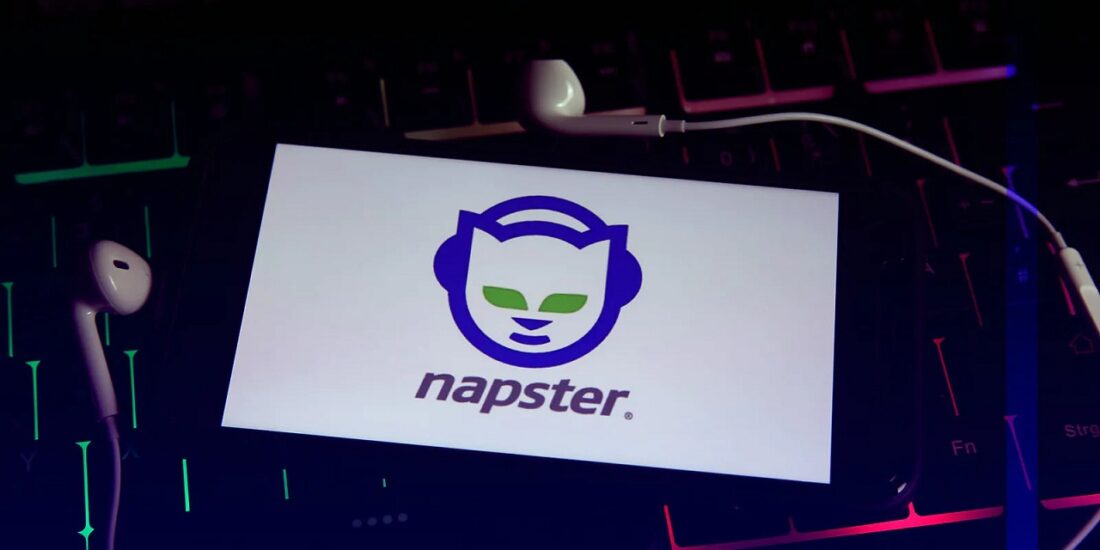
The Saga of Napster: Disruption, Legal Struggles, and Its Lasting Legacy
Napster was a groundbreaking peer-to-peer (P2P) file-sharing service that changed the way people consumed music in the early 21st century. Founded in 1999 by Shawn Fanning and Sean Parker, Napster quickly gained immense popularity due to its ease of use and extensive music library. However, the company faced numerous legal battles that ultimately led to its shutdown in 2001. In this article, we will delve into the history of Napster, why it was shut down, the legality of using the service, and the alternatives that have emerged in its wake.
History of the Founding
Shawn Fanning and the Origins of Napster
Shawn Fanning, a college student at the time, conceived the idea for Napster while attending Northeastern University in Boston. Fanning recognized the limitations of existing digital music-sharing platforms, which were often unreliable and cumbersome to use. Inspired by the potential to create a more efficient and user-friendly service, he began developing the software for Napster.
Sean Parker and the Formation of the Company
Fanning shared his idea with his friend Sean Parker, who would later become the co-founder of Napster. Parker saw the potential for Napster to revolutionize the music industry and encouraged Fanning to continue developing the software. The two ultimately dropped out of college to focus on launching the company.
Napster’s Meteoric Rise
Napster launched in June 1999 and quickly gained traction, with millions of users flocking to the platform within months. The service enabled users to share and download music files directly from one another’s computers, bypassing traditional distribution methods. This groundbreaking approach led to an explosion in the availability of digital music, allowing users to access millions of songs with just a few clicks.
Why Did Napster Get Shut Down?
Copyright Infringement Issues
The primary reason for Napster’s shutdown was copyright infringement. The service’s P2P file-sharing model made it easy for users to share copyrighted music without the permission of the artists or record labels. This led to a widespread loss of revenue for the music industry, as people could now access music for free rather than purchasing CDs or digital downloads.
Legal Battles
Napster soon found itself embroiled in a series of legal battles with major players in the music industry. In December 1999, the Recording Industry Association of America (RIAA) filed a lawsuit against Napster, alleging that the company was facilitating copyright infringement. Several high-profile artists, including Metallica and Dr. Dre, also filed lawsuits against the company.
The Court Ruling and Shutdown
In July 2000, a federal judge ruled in favor of the RIAA and ordered Napster to prevent the sharing of copyrighted material on its platform. The company attempted to comply with the order by implementing a filtering system, but this proved to be ineffective in stopping the unauthorized distribution of copyrighted music. In February 2001, the Ninth Circuit Court of Appeals upheld the earlier ruling, and Napster was forced to shut down its service in July 2001.
Was Using Napster Illegal?
The Legality of File Sharing
The legality of using Napster has been a subject of much debate. While the act of sharing copyrighted material without permission is illegal, the question of whether or not individual users were committing copyright infringement by using Napster is more nuanced. Some argued that users were simply engaging in fair use, a legal doctrine that permits the limited use of copyrighted material without permission from the rights holder under certain circumstances.
Court Rulings on User Liability
Ultimately, courts in the United States did not hold individual Napster users liable for copyright infringement. Instead, they focused on the company itself for facilitating and encouraging the sharing of copyrighted material. However, this does not mean that using Napster was entirely legal. In fact, the lawsuits against Napster set a precedent for future litigation against P2P file-sharing services and their users.
Lessons Learned
The Napster case served as a wake-up call for both the music industry and consumers. It highlighted the need for legal and ethical alternatives to unauthorized file sharing, leading to the emergence of new digital distribution platforms that respected artists’ rights and provided fair compensation. Additionally, the case underscored the importance of respecting intellectual property laws and understanding the consequences of engaging in copyright infringement.
Alternatives to Napster
The Emergence of Legal Digital Music Platforms
In the aftermath of Napster’s shutdown, the music industry witnessed the rise of several legal digital music platforms. These platforms revolutionized the way consumers accessed and shared music online, providing legitimate alternatives to piracy. Below are some benefits of Legal Digital Music Platforms:
- Access to Legal Content: These platforms addressed the issue of copyright infringement by offering licensed music, ensuring that artists and rights holders received appropriate compensation for their work;
- Convenience and Portability: Users could access their music libraries on various devices, including smartphones, tablets, and computers, allowing for seamless playback and portability;
- Discoverability and Personalization: Legal digital music platforms employed algorithms to recommend music based on user preferences, promoting music discovery and enhancing the overall listening experience;
- Support for Artists: These platforms established mechanisms to support artists financially through royalties and licensing deals, providing a more sustainable income stream compared to the piracy-dominated era.
iTunes
iTunes was introduced by Apple in 2001 and quickly gained popularity, becoming one of the most influential players in the digital music industry. Its success was largely due to its innovative approach to music distribution, offering users a legal and convenient way to purchase and download music.
Here are the key features that set iTunes apart from other platforms:
- Extensive Music Catalog: iTunes provided users with access to a vast catalog of songs from various genres and artists. Whether it was popular hits or niche tracks, users could find a wide range of music options on the platform;
- Legal Alternative to P2P File-Sharing: Prior to iTunes, many users relied on peer-to-peer (P2P) file-sharing services to obtain music illegally. iTunes offered a legal alternative by allowing users to purchase and download songs at affordable prices, ensuring that artists and rights holders received proper compensation;
- Seamless Integration with iPod: One of the reasons behind iTunes’ success was its integration with Apple’s iPod. Users could easily transfer their purchased music from iTunes to their iPods, creating a comprehensive music ecosystem. This integration made iTunes the go-to platform for iPod owners, further boosting its popularity;
- User-Friendly Interface: iTunes featured a user-friendly interface that made browsing, purchasing, and organizing music a simple and intuitive process. Users could easily search for songs, create playlists, and manage their music library with ease;
- Cross-Platform Compatibility: While iTunes was primarily developed for Apple’s devices and operating systems, it was later made available for Windows users as well. This cross-platform compatibility expanded iTunes’ user base and contributed to its widespread adoption.
Streaming Services
After the decline of Napster and the era of illegal file-sharing, streaming services emerged as a popular and legal way for users to access music. These services offered a vast collection of songs that could be streamed on-demand, revolutionizing the music industry. Here’s an overview of the streaming service landscape:
- Spotify: Launched in 2008, Spotify quickly became a frontrunner in the streaming market. It introduced a freemium model, allowing users to access music for free with occasional advertisements or opt for a paid subscription for an ad-free experience. Spotify’s vast music library, personalized playlists, and social sharing features contributed to its rapid growth and popularity;
- Apple Music: Apple Music was launched by Apple in 2015, providing a direct competitor to Spotify. It integrated seamlessly with Apple’s ecosystem of devices and services, offering a curated music experience, exclusive releases, and radio stations. Apple Music gained traction by leveraging its large user base and integration with other Apple products;
- Amazon Music: Amazon entered the streaming market with Amazon Music, offering a diverse catalog of songs to its customers. It provided different tiers of subscription, including a free ad-supported version for Amazon Prime members and a premium ad-free experience with additional features. Amazon Music’s integration with Amazon’s Echo smart speakers and Prime membership benefits helped establish its position in the market;
- Google Play Music/YouTube Music: Google Play Music, launched in 2011, offered a comprehensive music streaming experience with a vast library and personalized recommendations. In 2020, Google transitioned its music streaming service to YouTube Music, integrating it with the popular video-sharing platform. YouTube Music combined official songs, live performances, covers, and music videos into one platform, appealing to music lovers who enjoyed visual content alongside audio.
The Impact of Legal Alternatives
The emergence of legal digital music platforms has had a significant impact on the music industry. These services have helped curb piracy and generate revenue for artists and record labels through royalties and subscription fees. Additionally, they have transformed the way people consume music, shifting from ownership to access, and have given rise to new business models and opportunities for artists. Here’s an overview of the effects:
- Curbing Piracy: Legal digital music platforms have provided a convenient and affordable alternative to piracy, reducing copyright infringement and illegal file-sharing;
- Revenue Generation: These platforms have created new revenue streams for artists and record labels through royalties and subscription fees, ensuring fair compensation for their work;
- Shift from Ownership to Access: Consumers have transitioned from owning physical copies to accessing vast music libraries through streaming services, changing the dynamics of music consumption;
- New Business Models: Legal alternatives have opened up new opportunities for artists, allowing them to reach a global audience, connect directly with fans, and monetize their music without relying solely on traditional record deals.
Conclusion
The rise and fall of Napster represent a pivotal moment in the history of digital music distribution. While the platform’s P2P file-sharing model revolutionized the way people accessed music, its facilitation of copyright infringement ultimately led to its demise. The legal battles surrounding Napster set the stage for the emergence of legitimate digital music platforms, which have since reshaped the music industry and paved the way for a more ethical and sustainable approach to distributing and consuming music.





